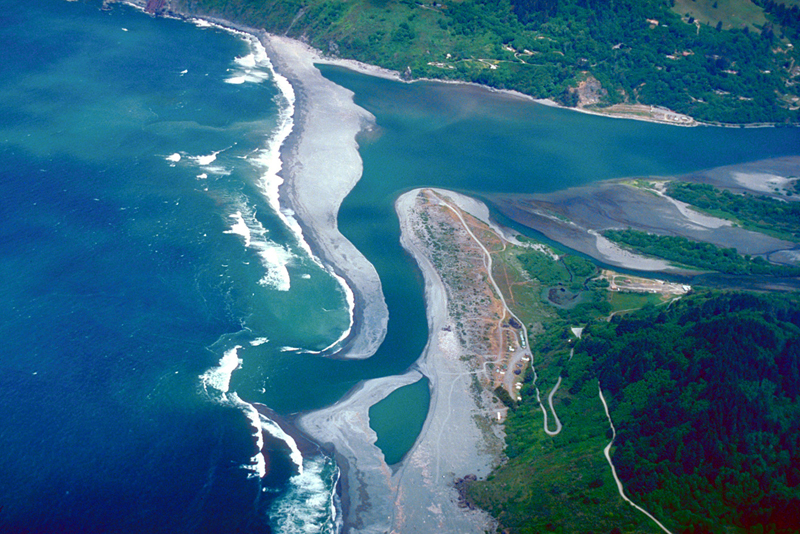| << Chapter < Page | Chapter >> Page > |

The daily mixing of fresh water and salt water is a physiological challenge for the plants and animals that inhabit estuaries. Many estuarine plant species are halophytes, plants that can tolerate salty conditions. Halophytic plants are adapted to deal with salt water spray and salt water on their roots. In some halophytes, filters in the roots remove the salt from the water that the plant absorbs. Animals, such as mussels and clams (phylum Mollusca), have developed behavioral adaptations that expend a lot of energy to function in this rapidly changing environment. When these animals are exposed to low salinity, they stop feeding, close their shells, and switch from aerobic respiration (in which they use gills) to anaerobic respiration (a process that does not require oxygen). When high tide returns to the estuary, the salinity and oxygen content of the water increases, and these animals open their shells, begin feeding, and return to aerobic respiration.
Freshwater biomes include lakes, ponds, and wetlands (standing water) as well as rivers and streams (flowing water). Humans rely on freshwater biomes to provide aquatic resources for drinking water, crop irrigation, sanitation, recreation, and industry. These various roles and human benefits are referred to as ecosystem services . Lakes and ponds are found in terrestrial landscapes and are therefore connected with abiotic and biotic factors influencing these terrestrial biomes.
Lakes and ponds can range in area from a few square meters to thousands of square kilometers. Temperature is an important abiotic factor affecting living things found in lakes and ponds. During the summer in temperate regions, thermal stratification of deep lakes occurs when the upper layer of water is warmed by the Sun and does not mix with deeper, cooler water. The process produces a sharp transition between the warm water above and cold water beneath. The two layers do not mix until cooling temperatures and winds break down the stratification and the water in the lake mixes from top to bottom. During the period of stratification, most of the productivity occurs in the warm, well-illuminated, upper layer, while dead organisms slowly rain down into the cold, dark layer below where decomposing bacteria and cold-adapted species such as lake trout exist. Like the ocean, lakes and ponds have a photic layer in which photosynthesis can occur. Phytoplankton (algae and cyanobacteria) are found here and provide the base of the food web of lakes and ponds. Zooplankton, such as rotifers and small crustaceans, consume these phytoplankton. At the bottom of lakes and ponds, bacteria in the aphotic zone break down dead organisms that sink to the bottom.
Nitrogen and particularly phosphorus are important limiting nutrients in lakes and ponds. Therefore, they are determining factors in the amount of phytoplankton growth in lakes and ponds. When there is a large input of nitrogen and phosphorus (e.g., from sewage and runoff from fertilized lawns and farms), the growth of algae skyrockets, resulting in a large accumulation of algae called an algal bloom . Algal blooms ( [link] ) can become so extensive that they reduce light penetration in water. As a result, the lake or pond becomes aphotic and photosynthetic plants cannot survive. When the algae die and decompose, severe oxygen depletion of the water occurs. Fishes and other organisms that require oxygen are then more likely to die.

Notification Switch
Would you like to follow the 'Concepts of biology' conversation and receive update notifications?